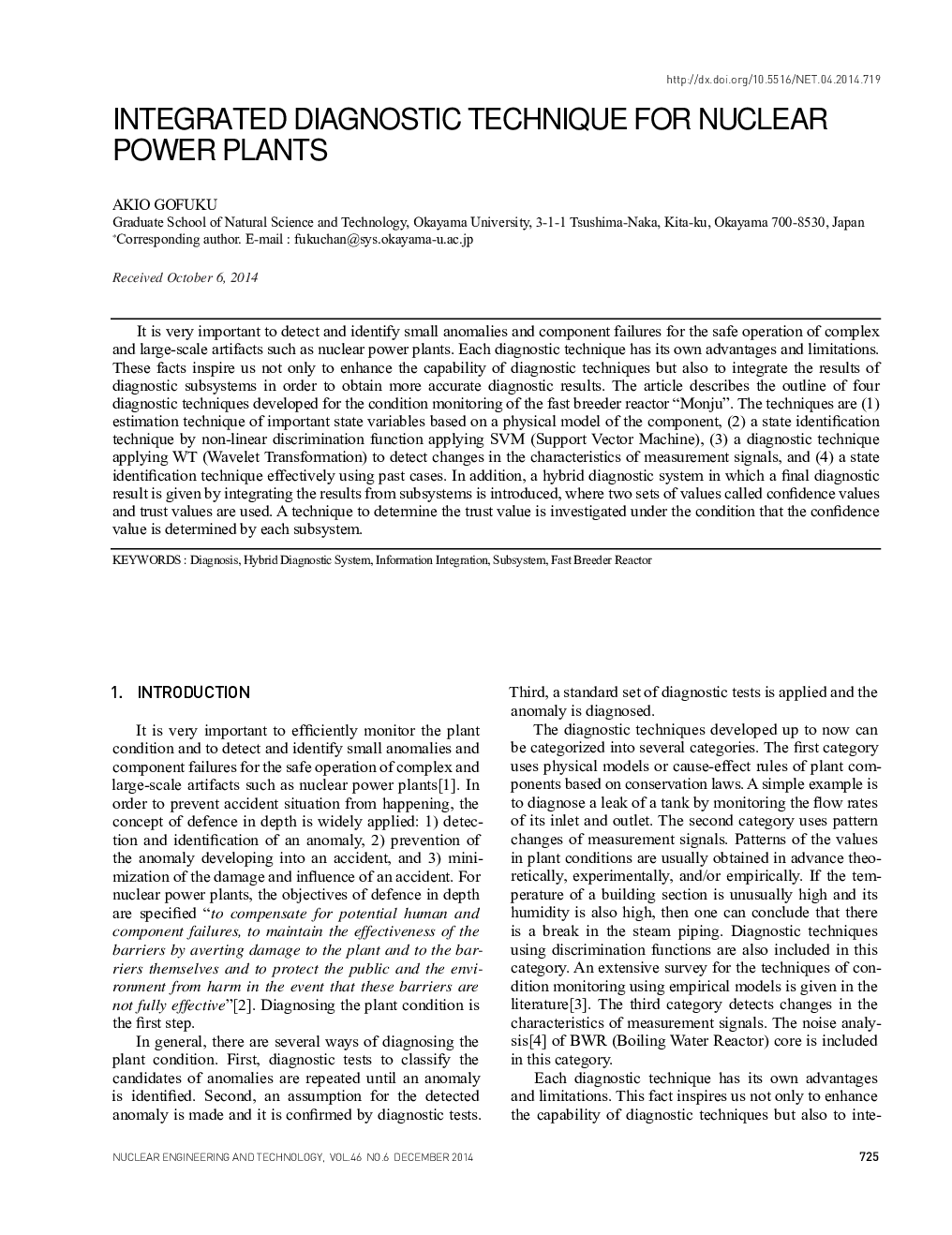| Article ID | Journal | Published Year | Pages | File Type |
|---|---|---|---|---|
| 1739926 | Nuclear Engineering and Technology | 2014 | 12 Pages |
It is very important to detect and identify small anomalies and component failures for the safe operation of complex and large-scale artifacts such as nuclear power plants. Each diagnostic technique has its own advantages and limitations. These facts inspire us not only to enhance the capability of diagnostic techniques but also to integrate the results of diagnostic subsystems in order to obtain more accurate diagnostic results. The article describes the outline of four diagnostic techniques developed for the condition monitoring of the fast breeder reactor “Monju”. The techniques are (1) estimation technique of important state variables based on a physical model of the component, (2) a state identification technique by non-linear discrimination function applying SVM (Support Vector Machine), (3) a diagnostic technique applying WT (Wavelet Transformation) to detect changes in the characteristics of measurement signals, and (4) a state identification technique effectively using past cases. In addition, a hybrid diagnostic system in which a final diagnostic result is given by integrating the results from subsystems is introduced, where two sets of values called confidence values and trust values are used. A technique to determine the trust value is investigated under the condition that the confidence value is determined by each subsystem.
